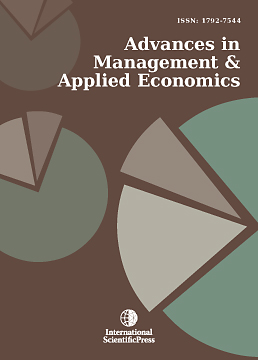Advances in Management and Applied Economics
Carbon Emission Hotspots and Mitigation Strategies in Aluminum Ingot Manufacturing
-
 [ Download ]
[ Download ]
- Times downloaded: 26
Abstract
This study analyzes the greenhouse gas (GHG) emissions of an aluminum ingot manufacturing plant in southern Taiwan, using complete 2023 inventory data to identify emission structures, hotspots, and feasible reduction strategies. The inventory followed ISO 14064-1:2018 and the Ministry of the Environment’s classification guidelines, with emissions calculated using the Intergovernmental Panel on Climate Change (IPCC) Sixth Assessment Report (AR6) global warming potential values. Hotspot analysis identified five major emission sources: procurement of primary aluminum, metallic silicon, and scrap aluminum; combustion of heavy oil in boilers; and purchased electricity. Improvement strategies were proposed for each hotspot, including raw material substitution (e.g., recycled aluminum), fuel switching (e.g., natural gas or biodiesel), energy efficiency measures (e.g., inverters, LED lighting, heat recovery), renewable energy adoption (e.g., solar PV, T-RECs), and supply chain carbon disclosure. A multi-criteria assessment framework—considering controllability, technical maturity, cost, and reduction potential—was used to prioritize actions. The findings demonstrate the dominance of supply-chain-driven emissions in the aluminum industry and underscore the need for supplier cooperation alongside internal efficiency improvements. Although applied to a single factory, the modular framework provides a replicable model for small- and medium-sized enterprises (SMEs) to implement carbon management. Verified by third-party certification (DNV, ISO 14064), the study highlights the value of continuous inventory refinement and future ISO 14067 certification to support Taiwan’s net-zero transition.
JEL classification numbers: Q54, Q56, L61, M11.
Keywords: Greenhouse Gas Inventory, Carbon Emission Hotspots, Aluminum Ingot Manufacturing, Mitigation Strategies, ISO 14064.
